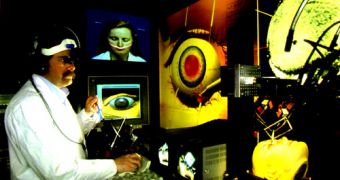The slightest error during a surgery can kill a patient or induce severe effects. But what if the surgeon would undo the error and try again? By now only in science fiction movies you have seen this happen, but in the future it could turn real. Practicing on your "digital double", a perfect virtual copy of you, a surgeon could practice the real surgery and when touching you with the knife, every movement is anticipated. But this is the work of mathematicians, to bring us this technology.
"You can fail spectacularly with no consequences when you use a simulator and then learn from your mistakes. If you make errors, you can undo them - just as if you're typing in a Word document and you make a mistake, you undo it. It's a cheaper alternative to cadavers and a safer alternative to patients." said UCLA applied mathematician Joseph Teran, involved in the research of virtual surgery technology.
"The ideal situation would be when patients come in for a procedure, they get scanned and a 3-D digital double is generated; I mean a digital double - you on the computer, including your internal organs. The surgeon first does surgery on the virtual you. With a simulator, a surgeon can practice a procedure tens or hundreds of times. You could have a patient in a small town scanned while a surgeon hundreds or thousands of miles away practices the surgery. The patient then flies out for the surgery. We have to solve mathematical algorithms so what the surgeon does on the computer mimics real life." added Teran.
Teran is the organizer of a virtual surgery workshop at UCLA, scheduled from Jan. 7 to 11 at UCLA's Institute for Pure and Applied Mathematics.
"A 3-D double of you can be made, but it would now take 20 people six to nine months. In the future, one person will be able to do it in minutes. It's going to happen, and it will allow surgeons to make fewer mistakes on actual patients. Our job as applied mathematicians is to make these technologies increasingly viable. A virtual surgery has to be biologically accurate. A virtual double needs to be really you." said Teran, who collaborates with a surgeon.
Virtual surgery requires advanced knowledge in mathematical equations, computational geometry and computer science. Teran is involved in finding algorithms to solve equations linked to the biomechanical simulation of soft tissues.
"How human tissue responds to a surgeon is based on partial differential equations. Tissue, muscle and skin are elastic and behave like a spring. Their behavior can be accounted for by a classical mathematical theory. Things in geometry that used to take days and days start to take hours and minutes." said Teran.
It seems that the physicians of the future will have to learn how to use computer surgical simulation. But the applied mathematics can also lead to more durable bridges, freeways, cars and aircraft.
"I would like people who design bridges to be able to use a virtual model - I'm interested in making that a reality and in creating numerical algorithmic tools that let people who design bridges have more computational machinery at their fingertips," he said.

 14 DAY TRIAL //
14 DAY TRIAL //